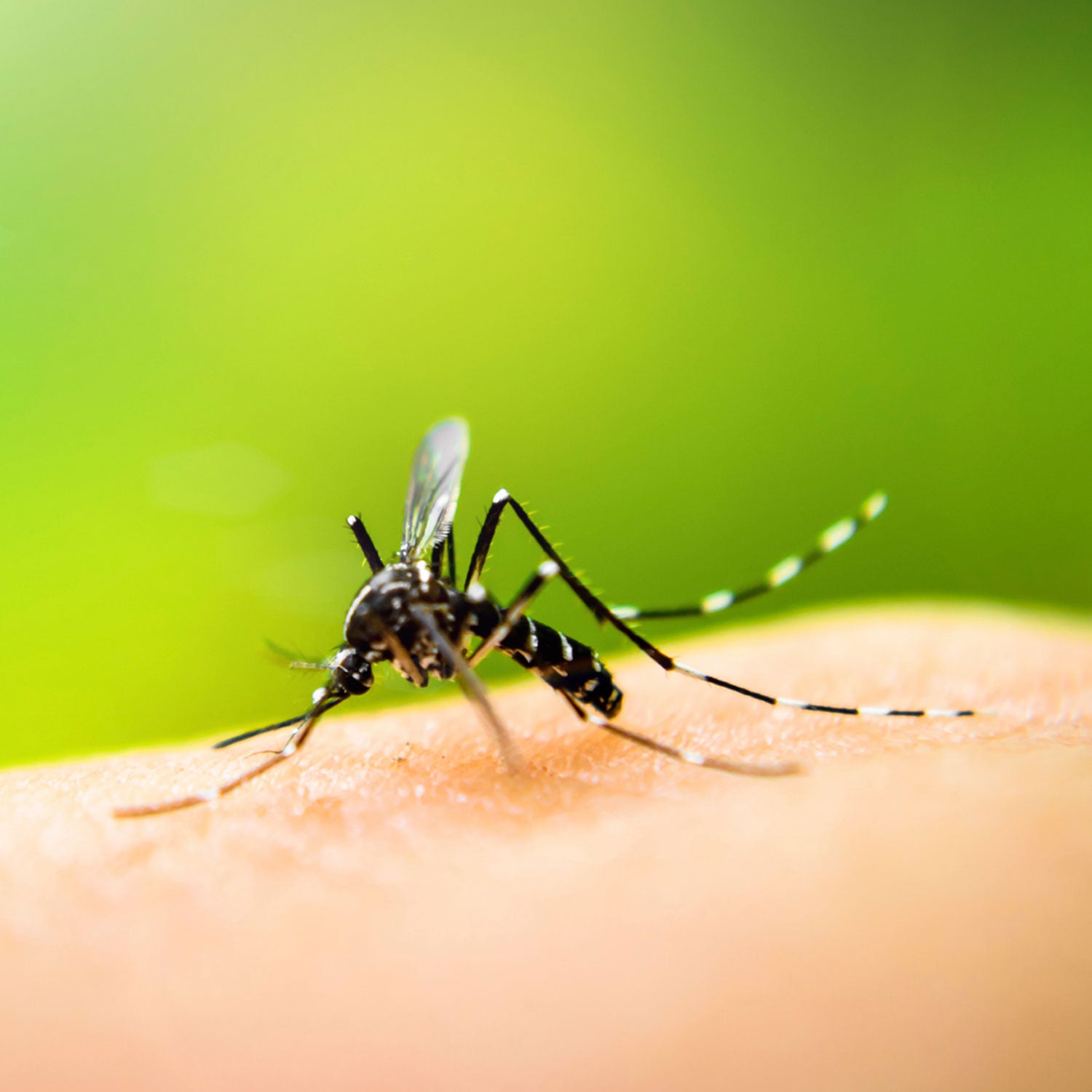This summer, the National Academies of Sciences endorsed continued research into a radical new technology that could allow us to essentially speed up and steer evolution in certain species. The technology, called a ÔÇťgene drive,ÔÇŁ is basically a DNA editing tool that, when applied in certain circumstances, could give a huge boost to our efforts to wipe out deadly plagues, save endangered species, and (this isn't hyperbolic)┬áallow us to alter life on earth as we know it.┬á
So far, gene drive has been used to tweak the reproductive capabilities of small pesty organismsÔÇömosquitoes, mice, parasites. Specifically, scientists have injected them with a customized┬ágene that each organism passes onto its offspring. The process lets a desired traitÔÇöfor instance, ÔÇöspread quickly throughout a population. Right now, scientists are mostly experimenting on insects and small vertebrates in captivity. (No humans allowed.)┬áBut if we were to release these genetically modified creatures in the wild, we could radically change whole species.┬á
Deploying a gene drive could allow us to stymie the spread of Zika, halt the march of Lyme disease, and protect ecosystems against certain unwanted invasive species, according to researchers at the vanguard of this new technology. Detractors say it could also spin wildly out of control. ÔÇťDo you really have the right to run an experiment where, if you screw up, it affects the whole world?ÔÇŁ MIT scientist Kevin Esvelt ┬áin June.┬á
ÔÇťDo you really have the right to run an experiment where, if you screw up, it affects the whole world?ÔÇŁ
In June, the National Academies of Sciences, Engineering, and Medicine, the most respected independent source for science policy recommendations in the country, supporting continued ÔÇťphased testingÔÇŁ of gene drive, while acknowledging the very real threat of ÔÇťirreversible effects on organisms and ecosystems,ÔÇŁ like causing inadvertent harm to some other critical keystone creature.┬á
As research across the country continues, here are five gene drive applications scientists are dreaming up and testing in the lab right now.
▓Đ┤ă▓§▒š│▄ż▒│┘┤ă▓§╠ř
Skeeters, those blood-sucking carriers of Zika, malaria, dengue, and so many other diseases, are the primary gene drive target right now, according to the National Academy of ScienceÔÇÖs .
There are a few ways we could bend the mosquito to our will, but the most discussed involves hitting the bug below the belt, so to speak, and rendering whole populations infertile. Researchers at Imperial College London that would disrupt egg production in female mosquitos. Anopheles gambiaeÔÇöthe primary vector of MalariaÔÇögenetically modified with this infertility gene, would then pass along the self-destructive trait to 90 percent their offspring.┬á
The idea is simple: knock the population of mosquitos so low that the transmission of deadly diseases to humans would stop. Anti-mosquito crusaders (like the late Dr. Fred Soper) could go further, too, and aim for the destruction of whole mosquito species. Aedes Aegypti, the primary vector of Zika, for instance, is a much maligned bug that scientists say has little ecological value. The world, , may be a better place without them.
Genetically modifying mosquitos isnÔÇÖt the stuff of a distant future, either. Oxitec, a British company that modifies mosquito genes for sterility but does not use gene driveÔÇöwhich means that the sterile trait is passed along to just 50 percent of mosquito offspring, instead of the pumped up, gene-drive-d 90 to 99 percentÔÇöhas been pushing to release its bugs in Key Haven, Florida, for years. (The company has in Brazil and the Cayman Islands.) In November, the Florida island residents┬á on whether to release the Zika-combating bugs in the wild.┬á
Despite the apprehensive human population, using gene drive to suppress mosquito numbers has support in high places. ÔÇťIn less than five years, I think thereÔÇÖs a good chance [the technology] will be out there,ÔÇŁ , who has funded research on gene drives.┬á
Mice
Lyme disease is a beast ravaging the Northeast and spreading across the country. On Nantucket, itÔÇÖs almost a way of lifeÔÇönearly 40 percent of the islandÔÇÖs population has the disease, according to its board of health.┬á
Although ticks may spend most of their time attached to deer, the insects often pick up Lyme from white-footed mice. In June, modifying the genome of NantucketÔÇÖs mice to make them resistant to the pathogen that causes Lyme.┬áIf the islandÔÇÖs , and small-scale lab experiments work,┬áthousands of genetically modified mice could be released on the island. (Islands are ideal places to test gene drive, since, in theory, the experiment could be contained.)┬áWith any luck, after a few quick generations of mice, a tick bite would go back to being a nuisance rather than the start of a life-long medical condition. ┬á
Fruit Flies
File this one under Because We Can. Last year, scientists at the University of California, San Diego, altered the genes of fruit flies in their lab, inserting a preference for albinism. The result was a lot of albino fruit fliesÔÇö, a full 97 percent of future generations carried the trait.┬áThe experiment was an early, dramatic success for gene drive technology. ÔÇťWe were stunned,ÔÇŁ researcher Ethan Bier told Science. ÔÇťIt was like the sun rose in the west rather than the east.ÔÇŁ
Pigweed
The pigweedÔÇömore technically known as Palmer amaranthÔÇöis a scourge in agriculture production across the American south. The weed moves fast, infesting fields and taking resources from cotton and soybean crops. In recent years, itÔÇÖs also developed resistance to glyphosate (a.k.a. Roundup), the most popular herbicide in the world. Scientists have for pigweed:┬áTarget and remove the genes in pigweed that protect it from Roundup, thereby allowing the ubiquitous herbicide to do its job; or genetically suppress the population of female pigweed, like with mosquitos, and wipe the weed out.
Invasive Species
Among the most alluring targets for gene drive are invasive species. The effort is still hypothetical, but it has researchers excited. Take the Asian carp, for example. The fish has menaced the MidwestÔÇÖs lakes and ponds since its introduction in the 1970s, outcompeting other native fish and eating them out of house and home. Currently, the Asian carp is moving toward the Great Lakes and,┬á, an invasion seems imminent.┬á
Genetically modifying the Asian carp to spawn only daughters is a tempting way to wipe out the non-native fish and protect the Great Lakes ecosystem, but . Despite humanityÔÇÖs best efforts, invasive species like the Asian carp have a knack for spreading across the globe. What if an Asian carp from America, with a genetically modified trait inserted into its genome, ? We could potentially eliminate an entire speciesÔÇöand perhaps an entire ecosystem. For now, this nightmare scenario is just a thought experiment, but scientific organizations and institutions are already debating how to regulate our ability to play God. ┬á


